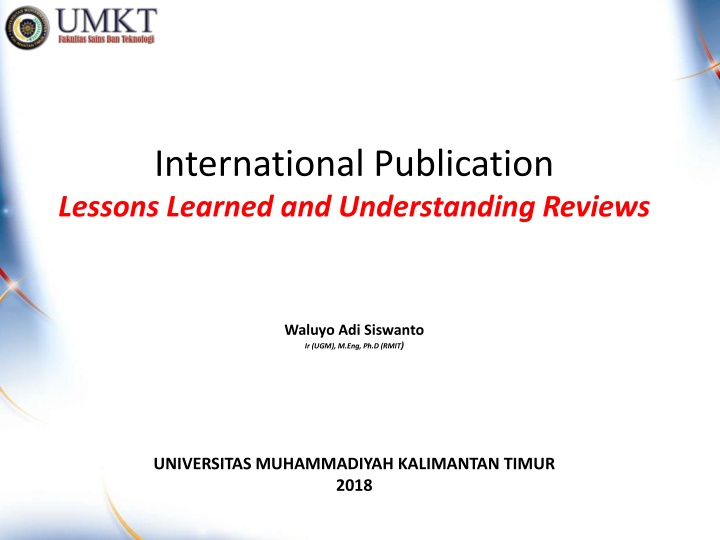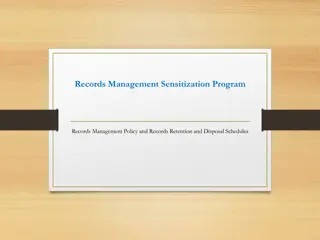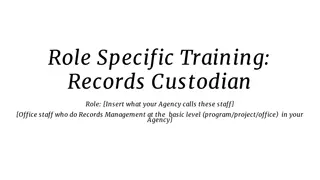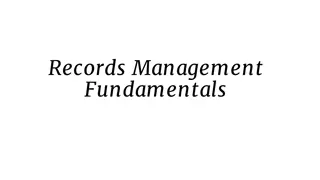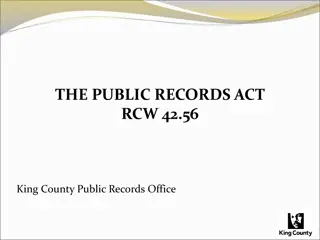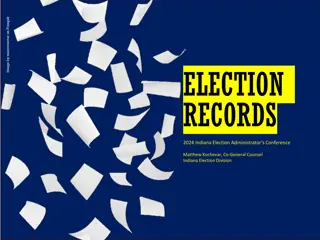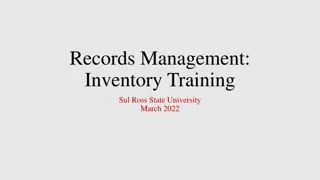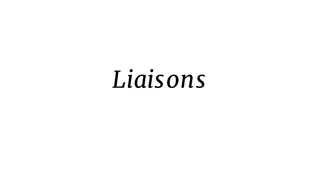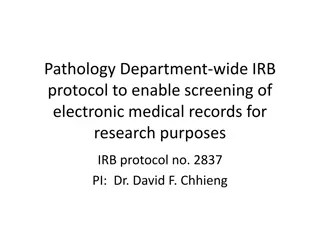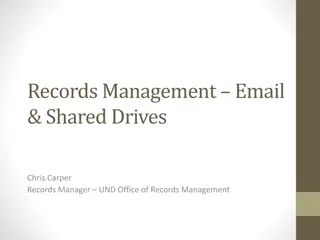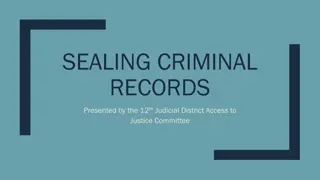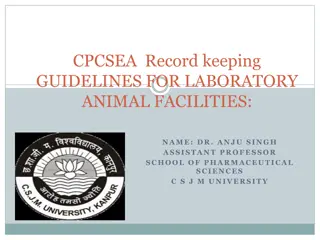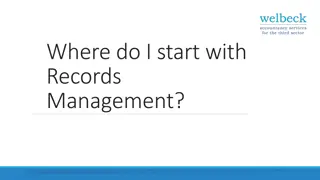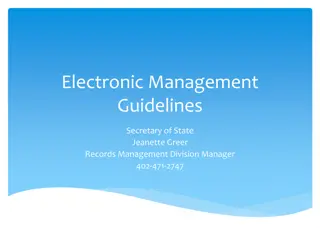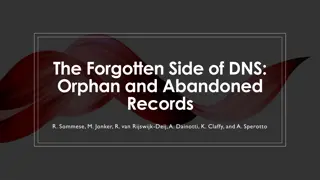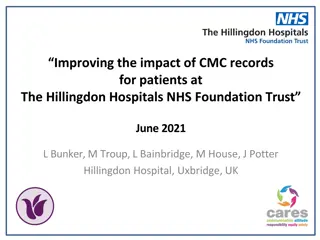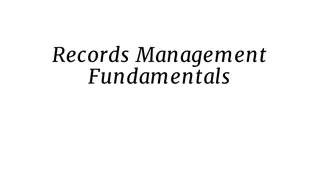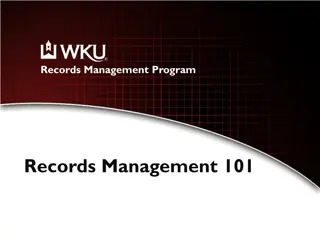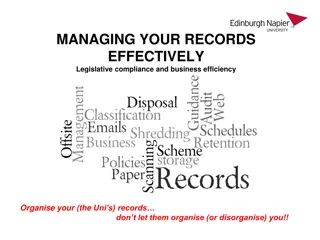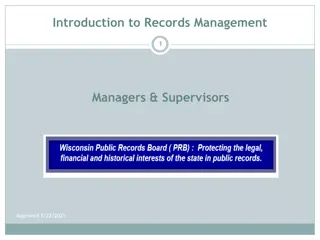Insights into International Publication Practices and Records
Explore lessons learned and key insights from the publication journey of Waluyo Adi Siswanto, highlighting essential aspects like writing style, abstracts, citations, and the review process. Delve into the publication records of Muhammadiyah universities in SCOPUS and Indonesia, shedding light on their contributions to academic literature.
Download Presentation

Please find below an Image/Link to download the presentation.
The content on the website is provided AS IS for your information and personal use only. It may not be sold, licensed, or shared on other websites without obtaining consent from the author.If you encounter any issues during the download, it is possible that the publisher has removed the file from their server.
You are allowed to download the files provided on this website for personal or commercial use, subject to the condition that they are used lawfully. All files are the property of their respective owners.
The content on the website is provided AS IS for your information and personal use only. It may not be sold, licensed, or shared on other websites without obtaining consent from the author.
E N D
Presentation Transcript
International Publication Lessons Learned and Understanding Reviews Waluyo Adi Siswanto Ir (UGM), M.Eng, Ph.D (RMIT) UNIVERSITAS MUHAMMADIYAH KALIMANTAN TIMUR 2018
About me 14-Feb-18 Waluyo Adi Siswanto 2
About me 14-Feb-18 Waluyo Adi Siswanto 3
Contents MOTIVATION Understanding publication index LESSONS LEARNED 1 Writing Style LESSONS LEARNED 2 Abstract LESSONS LEARNED 3 Citations and References Understanding Review Process Review and Response to Review Comments 14-Feb-18 Waluyo Adi Siswanto 4
Where Are We Now Muhammadiyah publication records in SCOPUS Muhammadiyah University Documents Universitas Ahmad Dahlan 306 Universitas Muhammadiyah Yogyakarta 165 Universitas Muhammadiyah Surakarta 162 University of Muhammadiyah Jakarta 45 Universitas Muhammadiyah Malang 21 Universitas Muhammadiyah Makassar 13 University Muhammadiyah Aceh 12 Universitas Muhammadiyah Semarang 12 Universitas Muhammadiyah Sidoarjo 12 Universitas Muhammadiyah Tasikmalaya 11 Universitas Muhammadiyah Prof. Dr. HAMKA 10 Sekolah Tinggi Ilmu Ekonomi Ahmad Dahlan Jakarta 2 Data retrieved from SCOPUS 22 November 2017, 11.07AM 14-Feb-18 Waluyo Adi Siswanto 6
Where Are We Now Indonesia Universities publication records in SCOPUS University Documents (1) Institut Teknologi Bandung 8695 (2) Universitas Indonesia 8139 (3) Universitas Gadjah Mada 5302 (4) Institut Pertanian Bogor 3625 (5) Lembaga Ilmu Pengetahuan Indonesia 2811 (6) Institut Teknologi Sepuluh Nopember 2805 (7) Universitas Diponegoro 2271 (8) University of Brawijaya 1861 Private universities (13) Bina Nusantara University 1314 (20) Telkom University 897 (23) Universitas Islam Indonesia 600 (33) Universitas Kristen Petra 366 (37) Universitas Ahmad Dahlan 306 (38) Universitas Katolik Parahyangan 297 (44) Universitas Katolik Indonesia Atma Jaya 233 (50) Universitas Pelita Harapan 230 (52) Universitas Trisakti 230 (56) Satya Wacana Christian University 214 Data retrieved from SCOPUS 22 November 2017, 11.07AM 14-Feb-18 Waluyo Adi Siswanto 7
Where Are We Now Indonesia Universities publication records in SCOPUS University Documents (59) Gunadarma University 197 (60) Widya Mandala Surabaya Catholic University 196 (61) Universitas Sanata Dharma 191 (66) Universitas Muhammadiyah Yogyakarta 165 (67) Universitas Muhammadiyah Surakarta 162 (68) Universitas Sultan Ageng Tirtayasa 154 (69) Universitas Dian Nuswantoro 152 (70) Tarumanagara University 152 (73) Universitas Kristen Maranatha 135 (77) Universitas Atma Jaya Yogyakarta 114 (79) Universitas Bung Hatta 109 (80) Universitas Mercu Buana 106 (121) Universitas Muhammadiyah Jakarta 45 Data retrieved from SCOPUS 22 November 2017, 11.07AM 14-Feb-18 Waluyo Adi Siswanto 8
Challenge Malaysia Universities, our neighbour (public and private universities) University Documents (1) University of Malaya 42731 (2) Universiti Sains Malaysia 32334 (3) Universiti Putra Malaysia 31431 (4) Universiti Kebangsaan Malaysia 30724 (5) Universiti Teknologi Malaysia 26447 (6) Universiti Teknologi MARA 16412 (7) International Islamic University Malaysia 9272 (8) Universiti Teknologi Petronas 8735 private (9) Universiti Malaysia Perlis 7399 private (10) Multimedia University 6319 (11) Universiti Tun Hussein Onn Malaysia 6166 (12) University Malaysia Pahang 4701 (13) Universiti Teknikal Malaysia Melaka 4383 (14) Universiti Utara Malaysia 4105 (15) Monash University Malaysia 3783 private (16) Universiti Malaysia Sabah 3607 private (17) Universiti Tenaga Nasional 3400 Data retrieved from SCOPUS 22 November 2017, 11.07AM 14-Feb-18 Waluyo Adi Siswanto 9
Challenge Annual publication , comparison 30000 (MY) 25000 (SG) 20000 Published Documents (TH) (ID) 15000 10000 5000 0 2007 2008 2009 2010 2011 2012 2013 2014 2015 2016 Malaysia 5379 7921 11371 15740 20751 22653 25182 28337 26796 28546 Singapore 11845 12890 13886 15590 16518 18157 18964 19661 19835 19992 Thailand 6736 7929 8441 10049 10715 11951 12216 13542 12719 14176 Indonesia 1327 1471 2037 2704 3324 3902 5113 6437 7834 11470 Viet Nam 1141 1500 1720 2163 2387 3136 3668 4043 4414 5563 Philippines 973 1072 1224 1342 1607 1744 1891 2174 2554 2642 Brunei 101 100 114 124 170 245 290 379 428 480 Data retrieved from SCIMAGO 23 November 2017, 10.20AM 14-Feb-18 Waluyo Adi Siswanto 10
Challenge Annual SCOPUS publications , comparison 1600 UMS (ID) UAD (ID) UGM (ID) UNS (ID) UTP (MY) UTHM (MY) 2005 2 0 65 4 20 28 1400 2006 2 7 89 8 47 38 2007 2 3 94 2 155 71 2008 3 1 113 8 207 100 1200 2009 1 6 159 22 280 152 2010 2 31 220 23 592 281 2011 7 24 269 20 930 389 1000 2012 4 10 315 28 843 405 Annual Publication UMS (ID) 2013 13 19 406 82 786 569 2014 26 24 485 155 1380 820 UAD (ID) 2015 22 41 549 143 843 676 800 UNS (ID) 2016 42 69 1058 414 1494 1285 2017 35 69 934 506 1082 1324 UGM (ID) 600 UTP (MY) UTHM (MY) 400 200 0 2005 2006 2007 2008 2009 2010 2011 2012 2013 2014 2015 2016 2017 Publication Year We are here Data retrieved from SCOPUS 22 November 2017, 11.07AM 14-Feb-18 Waluyo Adi Siswanto 11
Self Assessment I will contribute to TWO Scopus publication per year (yes/no) I will collaborate with my collegues to contribute to international publications (yes/no) 14-Feb-18 Waluyo Adi Siswanto 12
Abstracting and Indexing ABI/INFORM Complete Abstracts on Hygiene and Communicable Diseases Academic OneFile Academic OneFile - Agriculture Collection Academic OneFile - Psychology Collection Academic Search Alumni Edition Academic Search Complete Academic Search Research and Development Access to Global Online Research in Agriculture (AGORA) ACM Digital Library Advanced Polymers Abstracts Aerospace and High Technology Database AgBiotech Net AgBiotech News and Information AGRICOLA Agricultural Economics Database Agricultural Engineering Abstracts AGRIS Database Agroforestry Abstracts AIDS and Cancer Research Abstracts Airiti Library Algology, Mycology and Protozoology (Microbiology C) Allied and Complementary Medicine (AMED) Aluminium Industry Abstracts Analytical Abstracts Animal Behavior Abstracts Animal Breeding Abstracts Animal Production Database Animal Science Database ANTE: Abstracts in New Technologies and Engineering Applied Mechanics Reviews Applied Science and Technology Source Aquatic Science and Fisheries Abstracts (ASFA) Arts and Humanities Citation Index Bacteriology Abstracts (Microbiology B) Biocontrol News and Information BioEngineering Abstracts Biofuels Abstracts Biological Abstracts Biological Sciences Biomedical Reference Collection: Comprehensive Biomedical Reference Collection: Expanded BIOSIS Previews Biotechnology and BioEngineering Abstracts Biotechnology Research Abstracts Botanical Pesticides Business Source Alumni Edition Business Source Complete CAB Abstracts Cabell s Directories Calcium and Calcified Tissue Abstracts Ceramics Abstracts/World Ceramics Abstracts Chemical Abstracts Service (CAS) Chemical Engineering and Biotechnology Abstracts (CEABA) ChemSpider CHIMICA CINAHL Plus with Full Text CiteSeerX CNKI Scholar Community Health Composites Industry Abstracts Computer and Information Systems Abstracts Computer Database Computer Science Index 14-Feb-18 Waluyo Adi Siswanto 14
Abstracting and Indexing Computer Source: Consumer Edition Computers and Applied Sciences Complete Consumer Health Complete Contents Pages in Education Copper Technical Reference Library Corrosion Abstracts Crop Physiology Abstracts Crop Science Database CSA Civil Engineering Abstracts CSA Engineering Research Database CSA Materials Research Database with METADEX CSA Neurosciences Abstracts CSA Technology Research Database Current Abstracts Current Contents - Clinical Medicine Current Contents - Engineering, Computing and Technology Current Contents - Life Sciences Current Contents - Physical, Chemical and Earth Sciences Current Index to Statistics (CIS) Dairy Science Abstracts DBLP Computer Science Bibliography Dentistry and Oral Sciences Source Directory of Open Access Journals (DOAJ) Earthquake Engineering Abstracts EBSCO Academic Source Complete EBSCO Discovery Service EBSCO Engineering Source EBSCO MainFile EBSCO MegaFILE EBSCO Science and Technology Collection EBSCOhost Connection Ecology Abstracts Educational Research Abstracts Online (ERA) Educational Technology Abstracts Ei Compendex Electronics and Communications Abstracts Elsevier BIOBASE - Current Awareness in Biological Sciences (CABS) EMBASE EMBIOlogy EMCare Emerging Sources Citation Index Energy and Power Source Engineered Materials Abstracts Engineering Village Entomology Abstracts Environment Complete Environment Index Environmental Engineering Abstracts Environmental Impact Environmental Science Database Environmental Sciences and Pollution Management Excerpta Medica Abstract Journals Expanded Academic ASAP Expanded Academic Index Field Crop Abstracts Food Science Source Forest Products Abstracts Forest Science Database Forestry Abstracts Gale's Psychology Collection Genetics Abstracts GEOBASE GeoRef Global Health Google Scholar Grasslands and Forage Abstracts GreenFILE GREENR (Global Reference on the Environment, Energy, and Natural Resources) Health and Safety Science Abstracts 14-Feb-18 Waluyo Adi Siswanto 15
Abstracting and Indexing Meteorological and Geoastrophysical Abstracts Microbiology Abstracts Nematological Abstracts NIA Alzheimer s Disease Library (AD Lib) Nucleic Acids Abstracts Nursing and Allied Health Collection: Comprehensive Nursing Resource Center Nutrition Abstracts and Reviews Series A Nutrition Abstracts and Reviews Series B Nutrition and Food Sciences Database Oceanic Abstracts Oncogenes and Growth Factors Abstracts Online Access to Research in the Environment (OARE) Organic Research Database Ornamental Horticulture OTseeker Database (Occupational Therapy Systematic Evaluation of Evidence) PaperChem Parasitology Database Physical Education Index Pig News and Information Plant Breeding Abstracts Plant Genetic Resources Abstracts Plant Genetics and Breeding Database Plant Growth Regulator Abstracts Plant Protection Database Pollution Abstracts Polymer Library Postharvest News and Information Potato Abstracts Poultry Abstracts Primo Central Index Professional ProQuest Central ProQuest Advanced Technologies and Aerospace Collection ProQuest Agricultural Science Collection ProQuest Aquatic Science Journals ProQuest Atmospheric Science Journals Health and Wellness Resource Center Health Policy Reference Center Health Reference Center Academic Health Resource Center Publications Health Source: Nursing - Academic Edition Helminthological Abstracts HighBeam Research Higher Education Abstracts HINARI Access to Research in Health Programme Horticultural Science Abstracts Immunology Abstracts Index Medicus Index Veterinarius Industrial and Applied Microbiology Abstracts InfoTrac Custom journals INIST's Catalog of Articles and Monographs INSPEC InSPIRE Database International Abstracts in Operations Research (IAOR) International Aerospace Abstracts International Nuclear Information System (INIS Database) Irrigation and Drainage Abstracts J-Gate Portal Journal Citation Reports - Science Edition Leisure, Recreation and Tourism Abstracts Maize Abstracts Materials Business File Materials Science Citation Index Mathematical Reviews (MathSciNet) MDLinx Mechanical and Transportation Engineering Abstracts Mechanical Engineering Abstracts Medical and Pharmaceutical Biotechnology Abstracts MEDLINE METADEX 14-Feb-18 Waluyo Adi Siswanto 16
Abstracting and Indexing Scopus Seed Abstracts Social Sciences Citation Index Sociology of Education Abstracts Soil Science Database Soils and Fertilizers Abstracts Solid State and Superconductivity Abstracts Soybean Abstracts Statistical Theory and Method Abstracts (STMA-Z) Sugar Industry Abstracts Sustainability Reference Center Sustainability Science Abstracts Technology and Management (TEMA Database) The CIRRIE Database of International Rehabilitation Research The Electronic Library of Mathematics (EMIS ELibM) The Index of Information Systems Journals The Informatics Portal io-port.net The SAO/NASA Astrophysics Data System (ADS) The Summon Service The Transplant Library TOC Premier Toxicology Abstracts Transportation Research Information Services (TRIS) Tropical Diseases Bulletin Veterinary Bulletin Veterinary Science Database Virology and AIDS Abstracts Vocational Education and Training Abstracts Water Resources Abstracts Weed Abstracts Wheat, Barley and Triticale Abstracts Wilson OmniFile Full Text - Mega Edition World Agricultural Economics and Rural Sociology Abstracts WorldCat Discovery Services Zentralblatt MATH Database (zbMATH) Zoological Record ProQuest Biological Science Collection ProQuest Central ProQuest Computer Science Journals ProQuest Computing ProQuest Earth Science Collection ProQuest Engineering Collection ProQuest Environmental Science Collection ProQuest Health and Medical Complete ProQuest Materials Science Collection ProQuest Medical Library ProQuest Natural Science Collection ProQuest Pharma Collection ProQuest Polymer Science Collection ProQuest Psychology Journals ProQuest Public Health ProQuest Research Library ProQuest Science Collection ProQuest SciTech Collection ProQuest Technology Collection Protozoological Abstracts PsycINFO PubMed PubMed Central Referativnyi Zhurnal (VINITI) Research into Higher Education Abstracts Review of Agricultural Entomology Review of Aromatic and Medicinal Plants Review of Medical and Veterinary Entomology Review of Medical and Veterinary Mycology Review of Plant Pathology Rice Abstracts Risk Abstracts Rural Development Abstracts Science Citation Index Expanded Science Resource Center 14-Feb-18 Waluyo Adi Siswanto 17
Where to publish Included in JCR (Journal Citation Report) IMPACT FACTOR Previously Thomson-Reuters, now Clarivate Analytics Science Citation Index Expanded Social Science Index The impact factor (IF) or journal impact factor (JIF) of an academic journal is a measure reflecting the yearly average number of citations to recent articles published in that journal, for the last 2 years. Scopusis Elsevier s abstract and citation database Google Scholar 14-Feb-18 Waluyo Adi Siswanto 18
Can you guess Is it indexed by SCOPUS? It has IF or not? 14-Feb-18 Waluyo Adi Siswanto 19
How to check SCOPUS Of course from SCOPUS website https://www.scopus.com however you cannot check the journal source if you do not have a proper authorization So, use http://www.scimagojr.com 14-Feb-18 Waluyo Adi Siswanto 20
It means: it IS CURRENTLY indexed by SCOPUS 14-Feb-18 Waluyo Adi Siswanto 21
It means: it IS NO LONGER indexed by SCOPUS 14-Feb-18 Waluyo Adi Siswanto 22
14-Feb-18 Waluyo Adi Siswanto 23
How to Check JCR Impact Factor Of course from https://clarivate.com/products/journal-citation-reports/ however you cannot check the journal JCR IF if you do not have a proper authorization The free one is http://www.bioxbio.com/if 14-Feb-18 Waluyo Adi Siswanto 24
This is the latest ISI IF 14-Feb-18 Waluyo Adi Siswanto 25
Difficulty and Risk for SCOPUS publication easy high risk Conference based SCOPUS Publication paper submitted to a conference published in a conference proceeding or journal indexed by SCOPUS Journal indexed SCOPUS paper submitted directly to a journal indexed by SCOPUS Journal indexed SCOPUS with IMPACT FACTOR paper submitted directly to a journal indexed by SCOPUS also indexed in SCIE/SSCI difficult less risk SCOPUS regularly evaluate the list annually. If the quality of a journal does not meet the criteria, it will be delisted 14-Feb-18 Waluyo Adi Siswanto 26
Lessons Learned 1 Writing Style
Avoid this style Abstract Writing scientific paper as if in the PhD/Master Thesis. It has sections: Introduction (background of study, objectives, research questions) Literature Review Methodology Results and Discussion Conslusion and Recommendation References Appendices 1 Introduction 2 Methodology / Research Methods / Research Approach / Methods and Materials 3 Results and Discussion 4 Acknowledgements (optional) 5 Conclusion References Appendices (optional) 14-Feb-18 Waluyo Adi Siswanto 28
Avoid this style Using colloquial speech, slang, or childish words or contractions: don t, can t, isn t, won t, shouldn t, It s tummy, belly, yummy don't must be "do not isn't must be "is not won't must be will not shouldn't must be should not It s must be It is can tmust be cannot If you have etc or and many others in your manuscript, you have two options to do: Delete or remove it, or Write them all and never write etc or and many others. Using ambiguous interpretation etc , and many others 14-Feb-18 Waluyo Adi Siswanto 29
Avoid lengthy title keep it simple, brief and attractive Avoid: Drug XYZ has an effect of muscular contraction for an hour in snails of Achatina fulcia species Better: Drug XYZ induces muscular contraction in Achatina fulcia snails 14-Feb-18 Waluyo Adi Siswanto 30
Avoid abbreviations and jargon Avoid: MMP expression profiles cannot distinguish between normal and early osteoarthritic synovial fluid Better: Matrix metalloproteinase protein expression profiles cannot distinguish between normal and early osteoarthritic synovial fluid 14-Feb-18 Waluyo Adi Siswanto 31
Use appropriate descriptive words Avoid: Effects of drug A on schizophrenia patients: study of a multicenter mixed group Better: Psychosocial effects of drug A on schizophrenia patients: a multicenter randomized controlled trial Even better: Psychosocial effects of drug A on schizophrenia patients in a multicenter randomized controlled trial 14-Feb-18 Waluyo Adi Siswanto 32
Attention to these things Make sure the manuscript has gone through spelling checker. Mixing several languages Heavily local content for international readers 14-Feb-18 Waluyo Adi Siswanto 33
Avoid heavily local content The dispute over the Rembang cement case stems from the decree of the Governor of Central Java giving the environmental permit to PT Semen Indonesia in 2012. Decree of the Governor of Central Java Number 660.1./17 of 2012 on Environmental Permit for Mining and Construction of Cement Plant by PT Semen Gresik (Persero) Tbk reaping resistance from the people of Rembang. The decree is deemed to be contradictory with the socialization of EIA and the determination of groundwater basin area as a water catchment area and the use of geological protected forest area that is considered not fulfill the principle of sustainable development. In this dispute, the Governor of Central Java as the defendant I and the second defendant namely PT Semen Indonesia (SI) Persero Tbk in Rembang. Plaintiff in this case is Rembang citizen represented by Joko Prihanto along with Wahana Lingkungan Hidup Indonesia. Rembang case that has reached the cassation up to the PK seized the public's attention and invited the demonstration action from the people of Rembang. It s because the post-Supreme Court ruling. 99 PK / TUN / 2016 dated October 5, 2016 did not make the operation of the cement plant stop but the Governor re-issued environmental permit for PT Semen Indonesia. This reap the demands of the people of Rembang demanding that the environmental permit along with the factory business permit is revoked and stopped. This dispute is still continuing and continues to be guarded by the people of Rembang to defend their agrarian rights and rights as farmers and also for the sake of nature sanctuary of Kendeng from mining threat. This is closely related to the attitude of the Governor of Rembang in addressing the verdict of the PK by revoking the environmental permit or keeping it on, given the urge of Rembang people who remain firm in opposing the mining in the area with the main reason about the natural sustainability in Kendeng. The purpose of this study is to analyze and describe the concept of disorder of law in understanding the law and its work in society as something that flows in achieving an order and describes the disorder of law which causes chaos in the enforcement of environmental law in the case of Rembang community against PT. Cement Indonesia. This study was studied using socio-legal approach that describes social and legal reality, and seeks to understand and explain the logic of logical connection between both. Type of research used by the author in this research is descriptive research. In this study, the authors focus on the case of cement disputes on karst mining activities in Rembang, Central Java. The analytical method used is using deductive logic used to draw conclusions from general terms into individual cases. 14-Feb-18 Waluyo Adi Siswanto 34
Attention Consistency Verb Tense USE PAST TENSE: To describe your methodology and report your results. At the time you are writing your report, thesis, dissertation or article, you have already completed your study, so you should use past tense in your methodology section to record what you did, and in your results section to report what you found. The first stage started with an assumption adults would remember more items than children. The process extracted tannins from the leaves by bringing them to a boil in 50% ethanol. In experiment 2, response varied. 14-Feb-18 Waluyo Adi Siswanto 35
Attention Consistency Verb Tense USE PAST TENSE: When referring to the work of previous researchers. When citing previous research in your article, use past tense. Whatever a previous researcher said, did or wrote happened at some specific, definite time in the past and is not still being done. Results that were relevant only in the past or to a particular study and have not yet been generally accepted as fact also should be expressed in past tense: Smith (2008) reported that adult respondents in his study remembered 30 percent more than children. (Smith's study was completed in the past and his finding was specific to that particular study.) Previous research showed that children confuse the source of their memories more often than adults (Lindsey et al., 1991). (The research was conducted in the past, but the finding is now a widely accepted fact.) 14-Feb-18 Waluyo Adi Siswanto 36
Attention Consistency Verb Tense USE PAST TENSE: To describe a fact, law, or finding that is no longer considered valid and relevant. Nineteenth-century physicians held that women got migraines because they were the weaker sex, but current research shows that the causes of migraine are unrelated to gender. (Note the shift here from past tense [discredited belief] to present [current belief].) 14-Feb-18 Waluyo Adi Siswanto 37
Attention Consistency Verb Tense USE PRESENT TENSE: To express findings that continue to be true. Use present tense to express general truths or facts or conclusions supported by research results that are unlikely to change in other words, something that is believed to be always true: Genetic information is encoded in the sequence of nucleotides on DNA. Galileo asserted that the earth revolves the sun.(The asserting took place in the past, but the earth is still revolving around the sun. Note also that no source citation is needed here since it is a widely known and well-accepted fact that Galileo made this assertion.) 14-Feb-18 Waluyo Adi Siswanto 38
Attention Consistency Verb Tense USE PRESENT TENSE: To refer to the article, thesis or dissertation itself. Use the present tense in reference to the thesis or dissertation itself and what it contains, shows, etc. For example: Table 3 shows that the main cause of weight increase was nutritional value of the feed. (Table 3 will always show this; it is now a fact that is unlikely to change, and will be true whenever anyone reads this sentence, so use present tense.) 14-Feb-18 Waluyo Adi Siswanto 39
Attention Consistency Verb Tense USE PRESENT TENSE: To discuss your findings and present your conclusions. Also use present tense to discuss your results and their implications. Weight increased as the nutritional value of feed increased. These results suggest that feeds higher in nutritional value contribute to greater weight gain in livestock. (Use past tense to indicate what you found [weight increased], but use present tense to suggest what the result implies.) 14-Feb-18 Waluyo Adi Siswanto 40
Assignment Write two variants of your proposed title for your manuscript TitleVariant 1 Title Variant 2 14-Feb-18 Waluyo Adi Siswanto 41
Lessons Learned 2 Abstract
What should be written Structured Abstract Purpose (mandatory) Design/methodology/approach (mandatory) Findings (mandatory) Research limitations/implications (if applicable) Practical implications (if applicable) Social implications (if applicable) Originality/value (mandatory) 14-Feb-18 Waluyo Adi Siswanto 43
Abstract Example Purpose The purpose of this study is to focus on numerical simulation investigations of deformation analysis of asymmetric break-down rolling of a hollow steel, which seriously affects the service life of the final product. Design/methodology/approach The 3D rigid-plastic thermo-mechanical coupled finite element method (FEM) for a large strain was used to analyze metal deformation in the deformation zone for asymmetric rolling with different roller diameters. Findings The distribution of stress, strain and dimension accuracy for different diameters was obtained. The results show that the additional shear strain which is different from the normal compression deformation is generated in an asymmetric rolling process. The higher the ratio between upper and lower diameters, the greater the additional shear deformation. Originality/value Asymmetric rolling is an important factor affecting the dimensional accuracy of the hollow steel. This study can provide a theoretical basis for developing a reasonable rolling process of the hollow steel Tao Yan, Na Qin, Shuo Zhao, Liang Ma, Enlin Yu, (2017) "Deformation analysis of asymmetric break-down rolling of hollow steel", World Journal of Engineering, Vol. 14 Issue: 6, pp.483-488, https://doi.org/10.1108/WJE-09-2016-0091 14-Feb-18 Waluyo Adi Siswanto 44
Purpose This paper presents an initial development of a personal data attitude (PDA) measurement instrument based on established psychometric principles. The aim of the research was to develop a reliable measurement scale for quantifying and comparing attitudes towards personal data that can be incorporated into cybersecurity behavioural research models. Such a scale has become necessary for understanding individuals attitudes towards specific sets of data, as more technologies are being designed to harvest, collate, share and analyse personal data. Design/methodology/approach An initial set of 34 five-point Likert-style items were developed with eight subscales and administered to participants online. The data collected were subjected to exploratory and confirmatory factor analyses and MANOVA. The results are consistent with the multidimensionality of attitude theories and suggest that the adopted methodology for the study is appropriate for future research with a more representative sample. Findings Factor analysis of 247 responses identified six constructs of individuals attitude towards personal data: protective behaviour, privacy concerns, cost-benefit, awareness, responsibility and security. This paper illustrates how the PDA scale can be a useful guide for information security research and design by briefly discussing the factor structure of the PDA and related results. Originality/value This study addresses a genuine gap in research by taking the first step towards establishing empirical evidence for dimensions underlying personal data attitudes. It also adds a significant benchmark to a growing body of literature on understanding and modelling computer users security behaviours Joyce Hoese Addae, Michael Brown, Xu Sun, Dave Towey, Milena Radenkovic, (2017) "Measuring attitude towards personal data for adaptive cybersecurity", Information & Computer Security, Vol. 25 Issue: 5, pp.560-579, https://doi.org/10.1108/ICS-11-2016-0085 14-Feb-18 Waluyo Adi Siswanto 45
Avoid these Writing abstract more than 250 words Using personal pronouns within the structured abstract and body of the paper This paper investigates..." is correct, "I investigate..." is incorrect Contains citations in the abstract Using future tense 14-Feb-18 Waluyo Adi Siswanto 46
Assignment Rewrite your abstract to satisfy a structured abstract 14-Feb-18 Waluyo Adi Siswanto 47
Lessons Learned 3 Citations and References
Attention to citations in the text In general there are only 2 citations, authors should follow the style requested by the journal Author-year system In the text, citing to a reference source by using author-year style Numeral system By using number 14-Feb-18 Waluyo Adi Siswanto 49
Some common mistakes Not all figures/tables/appendices are mentioned in the text. ATTENTION: figures, tables also appendices are optional information. All explanation should be clearly spelled out in the text. Not all references are cited in the text In numeral system, the numbering appeared in the must be in order, starting from [1]. In author-year system, the reference list must be in alphabetical order. In numeral system, the reference list must be in order according to the the appearance in the text. Using et al. in the reference list. Source is not traceable. 14-Feb-18 Waluyo Adi Siswanto 50
